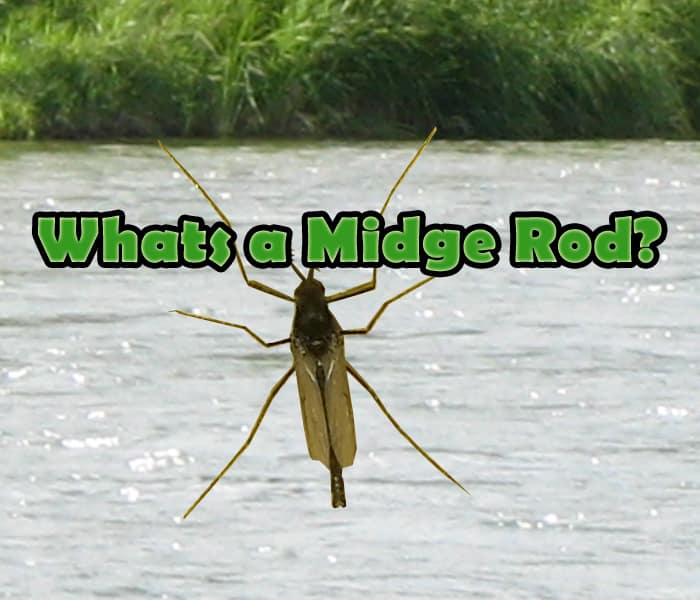This post was last updated on December 3rd, 2022 at 07:42 pm
 Why Do I Need A Special Rod for Midges?
Why Do I Need A Special Rod for Midges?
The bottom line when it comes to midges is that they are usually very small. Small hooks and light tippets means lighter rods will be required. A size 20 hook will not have the holding power of a size 12—you just can’t get enough meat in the hook. So the best way to prevent tearing the hook out is to fish a soft rod. The fly rod you use for streamers is not going to land very many fish on super small fly patterns. Don’t plan on landing many fish on a stout 6 weight with 6-7x, because they’ll probably break off on the hookset for the most part.
What are Some Characteristics of A Good Midge Rod?
There are many fly rods on the market that claim to be “midge rods” But what does that mean? Most of these rods are very short, from about 5′-7.5′ long and tend to be from 0 weight up to 4-5 weights. Now sure, these little guys will fish small flies and allow you to land fish without tearing out the hook. In a few days I’ll be out making a Troutster fishing video on the Snake river and I plan to bring an old school Redington 8′ 3 weight rod. During the summer and spring, I’d never let that little rod near the Snake river; but in the low winter flows it will work pretty good. I should be able to reach any fish within 60′ without too much trouble. The thing is, anything beyond 30′ I won’t be able to see the fly anyway.
I think the general idea with the traditional definition of midge rods is that short is a good thing.
Because:
- You will not need to cast far
- Shorter rods sometimes mean greater accuracy and control
For fishing dry fly midges, a short rod is totally fine, but what about midge nymphing? Good question! I once owned a 10.5 foot #4 Winston (something like this) that was perfect for tossing size 18 and smaller flies at big fish. It had enough backbone to be able to throw a big strike indicator, and was soft enough to keep the fish hooked during battle. Take a look at most steelhead noodle rods. These rods are very long, very soft and are capable of landing tremendous fish on very light line. If I’m in an area where I might want to cast a strike indicator 60-70′ with a couple zebra midges below it, I’ll be upset with a 6′ 2 weight.
So… What Should I Buy?
First you should consider the average size midges you be using and compare that to the distance you’ll need to cast. The bigger the flies, the stiffer the rod you can get away with.(Different areas will have different sized midges and species) If you are fishing small creeks with small fish, you could get away with a very small, very light rod. The bigger the water and fish size, the larger you’ll need to go. There are a ton of variables, but frankly most people can get away with a 7′-10′ 4 weight and be totally satisfied. It really depends on the specific rod. Every make and model is different, so it’s impossible to say “this size and length will work great”. If you want to be safe, look for a rod with a moderate action and stay away from any fast action stuff. Something like this Redington classic 8.5 ft. 4 weight would be a nice addition to your rod collection without breaking the bank. They would make a great midge rod for under $200. These feel a lot like the very old Redington rods that I tend to fish with often(and will be in a few days—Watch for the video! :)). The Redington butterstick fiberglass rod in some sizes would also be a good choice.
I hope this will clear up your midge rod questions. If you have a favorite rod you like to use for this, feel free to leave you suggestions below!
